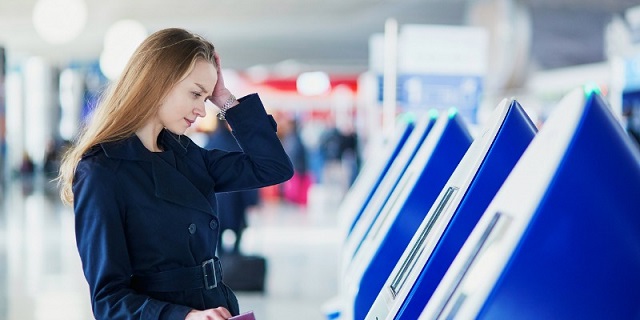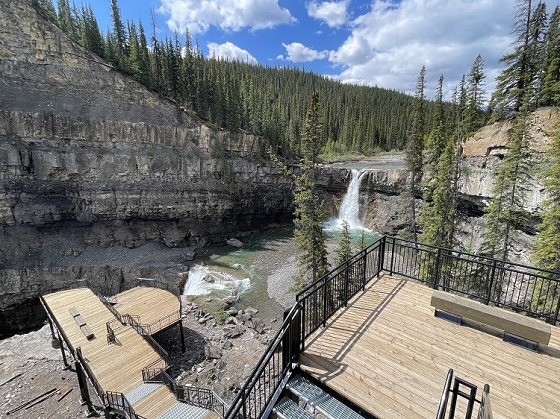Travel
Todayville Travel: Down on the Bayou- Cajun Hospitality

The news from Louisiana is often hurricanes, burst levees and the dangerous streets of New Orleans.
What we’ve discovered down South has been unreserved hospitality.
A few years ago on our first trip through the Bayou State the weather turned cold. We became stranded in the town of Natchitoches, blind-sided by a gale of sleet. Thrilled locals informed us they hadn’t seen snow in NAK-a-tish (that’s how it’s pronounced) for nine years. As polite Canadians, we controlled our elation.

A snowstorm in Louisiana?!
As luck would have it we had arrived the day of the annual river-barge parade. We mingled with happy revelers on the banks of the Red River. As we strolled, the sound of a Cajun band spilled from an antebellum mansion fronting Front Street. The owner, a well-dressed southern gentleman, was watching the parade through his wrought-iron fence. Small talk ensued. Soon the wandering Canadians were invited into a stately pre-Civil War home to join a bon fête.

Cajun fiddler in Natchitoches
The party lasted into the wee hours. Filet gumbo, stomping feet, a crackling fire and genuine Louisiana friendliness kept us warm. After much cajoling I joined the band, rang the Cajun ti-fer… and did credit to all Canadians – in the beverage consumption department.

Antebellum (pre-Civil War) mansion in Natchitoches
On our return to Louisiana this time we bypassed Natchitoches, hugging the Gulf Coast, seeking the blue bayou of the South. Roadside billboards stuck in the swamp advertised free consultation to shrimpers still affected by the Deepwater Horizon disaster. The ex-lawyer in me was intrigued. The guy seeking quiet solitude was – quietly disgusted.

A great blue heron rests on a cypress stump

Bald cypress in winter plumage
The bayous of Louisiana start where the Mississippi River begins to end: in the silted course of its enormous delta. Braided channels open and close. New rivers form. Shallow meandering creeks emerge in swamps overgrown with cypress and mangrove forests. These muddy backwaters are the birthplace for a vast array of aquatic life. Their predators – birds and reptiles – lurk quietly in the sultry stagnant shadows.
When we arrived at the Morgan City campground it was dark. We were hungry, tired, irritable – and without a reservation. Most horrible camping experiences begin with a late arrival. While attempting to set up in the dark I backed into the last open site, glancing off an oak tree and a concrete picnic table, fanning the fires of a simmering matrimonial dispute.
I walked, fuming, past a campsite’s roaring fire toward the office to register. A happy group of tenters were huddled near the flames, laughing and smoking.
“You were pretty lucky to get that spot on a busy weekend,” said the affable occupant of site B12. “Where y’all from?
I told him we were from Alberta and said we were hungry and hoping to find a Cajun restaurant nearby. He recommended a place in town down by the Riverwalk and wished us a pleasant evening.
My mood was greatly improved when we drove back through the gate a couple of hours later, stuffed to overflowing with crawfish and dirty rice.
“How was the Creole?”
The small group settled around B12’s fire was well into their cups and still going strong. My relaxed demeanor confirmed we had not been led gastronomically astray.
“Why don’t you and your wife come on over for a drink?” asked the friendly fellow who was responsible for my contented smile. I slipped into our RV and grabbed a couple of Pilsners I had lugged from home. I handed a cold one to Dean Landry and his wife Vicky.
“These all the way from Canada?” Dean asked.
“Yup. There is no finer Canadian beer.” (I had my fingers crossed behind my back.)
“How come he talk so funny?” asked Zach, Vicky’s precocious twelve-year-old.
“Sshh, you mind your manners,” said Miss Vicky.
Zach carried on, unabashed. “You got a different kind ‘a money up ther‘ in Canada?”
I reached into my pocket and handed Zach a blue, five-dollar bill. I proudly told him it was worth almost $4 American and that it was now his.
“This’s made out of plastic,” he screamed, running through the campground, announcing to the world that some geezer from Canada had just given him a foreign blue fiver.
“Why you come down to these parts?” Mr. Landry asked. His surname and that unique Louisiana cadence confirmed his Cajun ancestry.
(Cajuns are the descendants of Acadians, French Canadians expelled from Nova Scotia in the eighteenth century. They brought a distinct culture and dialect to the swamps of the South. To the uninitiated, Cajun French is unintelligible. Their English is only marginally more comprehensible. For instance if a Cajun asks, “where you gonna powk de caw?” he is not rudely inquiring about your bedroom habits – he’s just asking where you intend to park the Buick.)
“We’re here to see the bayou,” I told Dean. “I want to get into the backwaters, see the swamp, the alligators. I noticed there are some operators in town offering boat tours. What do you think?”
Dean looked at the fire for a moment, drained the last of his Pil and said, “You an early riser?”
“Not particularly,” I replied truthfully.
“Dean, he an early bird,” chimed in Vicky. “He’s up with the roosters.”
“I live only a little more than fifty mile from here, up near Thibodau, in Lafourche Parish.” Unlike the other 49 States of the Union, which have Counties, Louisiana is divided into Parishes – further tribute to its French roots.
“Ain’t any big deal for me to scoot over first thing in the morning and hook up my boat. By the time y’all get up, my skiff’ll be waiting for you. I’ll show you the real bayou, not some tourist crap.”
We’d had a few brewskies by then – and I don’t put a lot of stock in late-night campfire bravado. So when I popped my head out of the camper the next morning my expectations for a bayou experience weren’t high.
“There you are,” shouted Dean, wiping down the lovely flat-bottomed craft that had appeared at his site. He’d driven 80 kilometers to his home, breakfasted with his daddy, hitched up the boat and returned – all while I was still sawing logs.
“And he’s been polishing that motor for near an hour now,” Vicky smiled.
My mother told me I’d never amount to anything if I didn’t get up early and get to it. But somehow serendipity follows my late-morning shadow, shaking me awake with fortunate encounters.
Vicky, Zach, my wife Florence and I jumped into the boat and Dean motored us into the bayou. The perspective from water was entirely different from the bits of swamp we could see while driving. Narrow muddy channels serpentined every which way and within minutes I was completely lost in a vast wet labyrinth.
We floated through vast groves of bald cypress trees draped in Spanish moss, their knees soaked in brackish water; past “fishing camps” – remote wooden cabins fronted by a small deck for fishing. (Many sported a Confederate flag. For the South, the Civil War is not yet over.)

For some Southerners that war ain’t over yet
The gators were out, sunning on logs or floating motionless, eyes protruding silently above the water. These malevolent-looking reptiles can grow to four meters and 400 kilograms – top of the food chain in these hidden warrens. In the bayou it’d be easy to dispose of things unwanted. I was glad Dean was a friendly chap.
Zach acted as lookout, chatting constantly, identifying all flora and fauna the bayou had to offer.
An abandoned orange hurricane pod, resembling a wayward UFO, floated uselessly in a backwater, testament to the unrelenting power of Mother Nature.

An abandoned hurricane pod resembles a wayward UFO
We moored for lunch at Gros’ Place, a remote camp accessible only by water. A huge kettle of fragrant jambalaya boiled above an open fire. A fresh-dressed deer carcass dangled from a hook in the kitchen.

This must be the place!
After a meal of fried catfish and white beans – and an afternoon of great camaraderie, Dean steered us out of the bayou, effortlessly retracing our path through the indiscernible twisting, turning channels. The sun, shining through a thick canopy of cypress and mangrove, hinted vaguely at our direction of travel.

Zach entertains the womenfolk in the bayou
At the dock we shook hands with Dean and Vicky, said good-bye and climbed into our RV, headed for New Orleans. As we pulled away Zach strolled up. I rolled down the window:
“That new? That got a diesel engine in it? My grandpa told me down on the farm that you got to fill a special compartment with somethin’ called urea to keep a diesel engine running. Urea same as pee, but you got to pay twenty dollar for five gallons.”
If there’s one thing I can’t stand it’s a know-it-all kid. I thanked him for his advice and drove off.
“That kid is either a savant or a nut,” I said to Florence.
Less than a hundred kilometers down the road a yellow warning light flashed on the dash. I pulled over. The owner’s manual indicated there was a malfunction in something called the DEF. The problem required immediate attention. After twenty ignition starts the vehicle would be rendered inoperable. I stopped at an Auto Zone and explained my problem to the man behind the counter.
“You need to add DEF fluid. It’s over there behind the antifreeze. It’s really just urea,” he said in a thick Cajun drawl.
“Yeah,” I replied. “Just like pee, but costs twenty bucks.”
About the author:
Gerry Feehan QC practised law in Red Deer for 27 years before starting his second life as a freelance travel writer and photographer. When not on the road, Gerry and his wife Florence live in Red Deer and Kimberley, BC. Todayville is proud to work with Gerry to publish some of his most compelling stories from his vast catalogue developed over more than a decade of travel.

Check out other stories by Gerry simply by clicking on the title below.
Business
Here’s why your plane ticket is so expensive

From the Fraser Institute
By Alex Whalen and Jake Fuss
While the strike by WestJet mechanics lasted only a few days, many Canadian air travellers faced long delays and cancelled flights. More broadly, according to the Canadian Transportation Agency, customer complaints have hit an all-time high.
Yet many dissatisfied travellers likely don’t realize that Ottawa heavily contributes to their frustrations. Let’s look at the various ways federal policies and laws make air travel worse in Canada.
First, federal laws insulate Canada’s airlines from competition. Foreign airlines are subject to highly restrictive “cabotage” laws which, for example, dictate that foreign airlines cannot operate routes between Canadian cities. At the same time, foreign investors are forbidden from owning more than 49 per cent of Canadian airlines. By restricting international participation in the Canadian air travel market, these laws both deprive Canadian consumers of choice and insulate incumbent airlines from competition. When consumers have more choice, incumbents have a greater incentive to improve performance to keep pace with their competitors.
Second, a wide array of taxes and fees heavily influence the cost of airline tickets in Canada. Airport improvement fees, for example, average $32.20 per departing passenger at airports in Canada’s 10 largest markets. In contrast, airport improvement fees in the United States cannot exceed $4.50. And last year the Trudeau government increased the “air travellers security charge” by 32.85 per cent—this fee, which now ranges from $9.94 to $34.82 per flight, is higher in Canada than the U.S. across all flight categories. On the tax front, in addition to fuel taxes including the federal carbon tax, the federal excise tax on unleaded aviation gasoline in Canada is 10 cents per litre compared to 6.9 cents per litre in the U.S. And the U.S., unlike Canada, does not apply sales taxes to aviation fuel.
Third, air travel is a heavily regulated sector. Federal legislation generates thousands of provisions airlines must follow to operate legally in Canada. Of course, some regulation is necessary to ensure passenger safety, but each regulation adds administrative and compliance costs, which ultimately affect ticket prices. To lower the cost of air travel, the federal government should reduce the regulatory burden while maintaining safety standards.
Lastly, the ownership model of Canada’s airports results in a yearly transfer of rent to the federal government. The federal government used to own Canada’s national system of airports until they were transferred to private not-for-profit corporations in the early 1990s. However, these airports must still pay rent to the federal government—nearly half a billion dollars annually, according to the Canada Airports Council. As with the other examples listed above, these costs are ultimately passed on to consumers in the form of higher ticket prices.
While a precise estimate is difficult to obtain, various government policies, taxes and fees comprise a large share of the cost of each airline ticket sold in Canada. With complaints from travellers at all-time highs, the federal government should reduce the regulatory burden, increase competition, and lower fees and taxes. Policy reform for air travel in Canada is long overdue.
Authors:
Alberta
Just in time for Canada Day weekend! Crescent Falls ready to be enjoyed again

The new staircase structure and viewing platform are among many upgrades that visitors can look forward to at the reopening Crescent Falls Provincial Recreation Area. (Credit: Alberta Parks).
The popular Crescent Falls Provincial Recreation Area reopens following a significant capital investment to improve visitor safety and experiences.
Crescent Falls Provincial Recreation Area is ready to welcome visitors back to enjoy one of the most remarkable, accessible waterfall viewing opportunities in Alberta. The upgrades at Crescent Falls will help improve the park’s visitor experience. Guests can expect expanded parking, improved access roads, trails and day use areas, new and improved viewing areas to take in the falls and upgraded safety measures, including signage and wayfinding.
The Provincial Recreation Area (PRA) is reopening over the July long weekend after being closed since 2023. Visitors will notice increased public safety upgrades through additions such as new parking lots, a new stair structure to access the lower falls, new pedestrian trails, a new vehicle bridge to access the camping area and a viewing platform to enjoy the Crescent Falls.
“We are thrilled to welcome visitors back to Crescent Falls Provincial Recreation Area in time for the Canada Day long weekend. These additions will help visitors to safely access and enjoy the area’s natural beauty. Parks are for people and Alberta’s government will continue to invest in high-quality outdoor recreation opportunities.”
“Today marks a significant milestone for our community as we reopen the Crescent Falls Provincial Recreation Area following extensive upgrades. Our province is well known for its incredible natural beauty, and these improvements will make our backcountry more accessible and ensure that Albertans and those visiting our great province can continue to explore our stunning landscapes for years to come.”
-

 2025 Federal Election1 day ago
2025 Federal Election1 day agoPoilievre To Create ‘Canada First’ National Energy Corridor
-

 2025 Federal Election1 day ago
2025 Federal Election1 day agoJoe Tay Says He Contacted RCMP for Protection, Demands Carney Fire MP Over “Bounty” Remark
-

 2025 Federal Election2 days ago
2025 Federal Election2 days agoChinese Election Interference – NDP reaction to bounty on Conservative candidate
-

 2025 Federal Election1 day ago
2025 Federal Election1 day agoHong Kong-Canadian Groups Demand PM Carney Drop Liberal Candidate Over “Bounty” Remark Supporting CCP Repression
-

 2025 Federal Election1 day ago
2025 Federal Election1 day agoLondon-Based Human Rights Group Urges RCMP to Investigate Liberal MP for Possible Counselling of Kidnapping
-

 Daily Caller18 hours ago
Daily Caller18 hours agoBiden Administration Was Secretly More Involved In Ukraine Than It Let On, Investigation Reveals
-

 2025 Federal Election1 day ago
2025 Federal Election1 day agoFixing Canada’s immigration system should be next government’s top priority
-

 2025 Federal Election21 hours ago
2025 Federal Election21 hours agoRCMP Confirms It Is ‘Looking Into’ Alleged Foreign Threat Following Liberal Candidate Paul Chiang Comments












